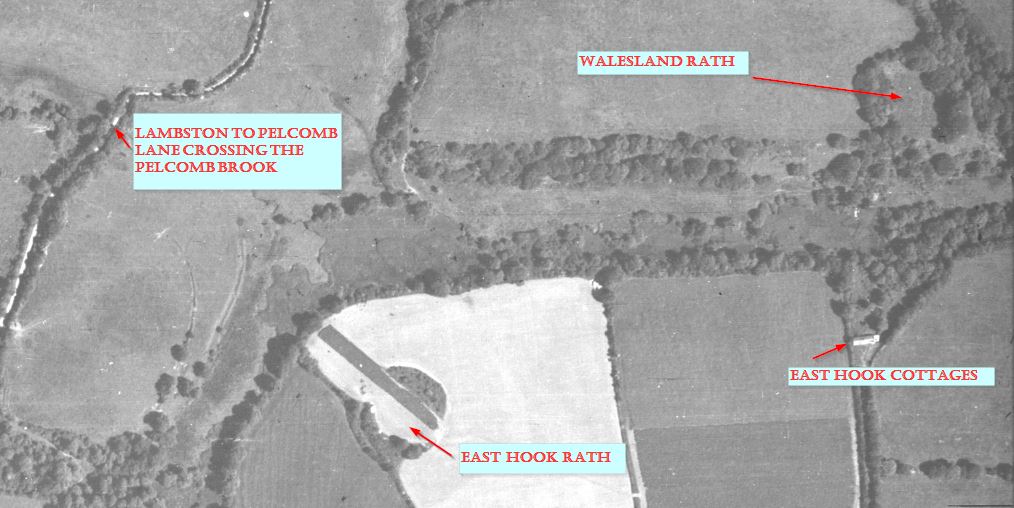Introduction
Lambston as a parish does not seem to appear much in the formal histories of Pembrokeshire. No battles were fought here, no major mining or quarrying happened here. There were none of the great landowners based here. But just like any other part of Wales, the parish has had a long and complex history. It just isn’t recorded. Since Iron Age times, the area would have been dominated by farming. Only in the last 100 years have there been significant numbers of residents working in other types of job.
Archaeology
We know that people were living in this general area from Stone Age times because of the excavations at Nab Head, south of St Bride’s Haven. This is only 8 miles away as the crow flies. That site was a centre of international trade in flint and stone objects.
The Dyfed Archaeology Trust study on Raths in Pembrokeshire identifies four sites in Lambston parish. A rath is a mainly Irish term. It is used in Pembrokeshire to describe early, usually Iron Age, defensive settlements characterised by roughly circular banks and ditches. These were at Walesland, East Hook, Sutton Mountain and Westhill Fold. An excavation of Walesland Rath in the 1960s found evidence of occupation between the fourth century BC and the second century AD.

Before the Normans
There then seems to be about a 1000 year gap in information until the Norman occupation. This may be because I have not done enough research yet. It probably doesn’t help that I don’t speak Welsh and some records might be available that I cannot use. The period corresponds pretty well with what has been known as the Dark Ages after the retreat of the Romans and before the written record began. No doubt the people living in this area lived full and interesting lives. They would have seen their community as the centre of the meaningful world (as we all tend to do). They had the same triumphs and struggles as better documented areas and times – we just don’t know about them. In this time the roots of the parish system may have been laid down in the Welsh Cantref administrative units.
Norman and Flemish Settlement
Lambston as a place-name appears in the twelfth century. It seems to be associated with a Flemish Settler, Lambertus Echeners, though there have been other ideas explored more fully in the place-name page.
There are good records of a combination of Norman and Flemish settlement of south and mid-Pembrokeshire. There is some evidence that the Flemings, used by Henry I to settle more difficult areas, tended to drive out the indigenous population as part of their approach to settlement.
The church at Lambston may well have been built on an earlier religious site. There may well have been a Celtic Christian building here but the church first appears in the written record in 1291. It would of course at that time have been a Catholic church.
Other early records of place names include Sutton (1219). Lambston (1291) (I am not clear if this was the farm or the parish). Walesland (1392), Honey Hook (13th century). East Hook appears in the 14th century and there is a mysterious West Hook which is mentioned in a 14th Century record. Several of these farms have multiple versions of their names though time. The Church and East Hook are two of the only Listed Buildings in the parish and are mentioned in the Pevsner Guide to Pembrokeshire. The owner of East Hook has produced two very interesting pages of history of the farm on their website.
The land would have been managed through the Norman Manorial system and there is a useful article on the area by Bob Joyce in the Journal of the Pembrokeshire Historical Society
Later History
There is a good deal more to add here. I plan to have pages on each century but at present there there are only a couple of pages. Much of the rest of this site gives a mainly nineteenth and twentieth century view of the parish because that is where the main records can be found. I hope however to dig deeper as time goes on.
If you have a particular aspect that you are interested in, or can contribute from your knowledge, please let me know.